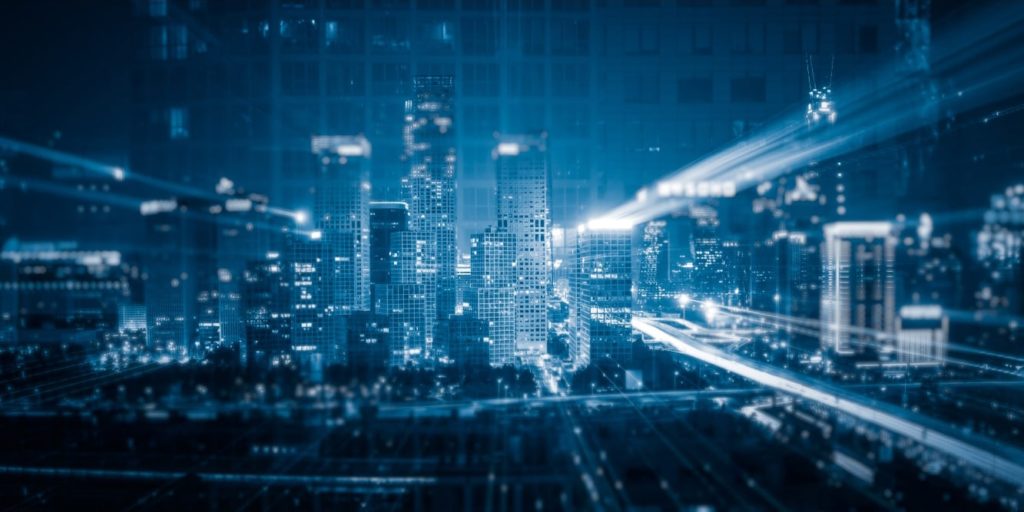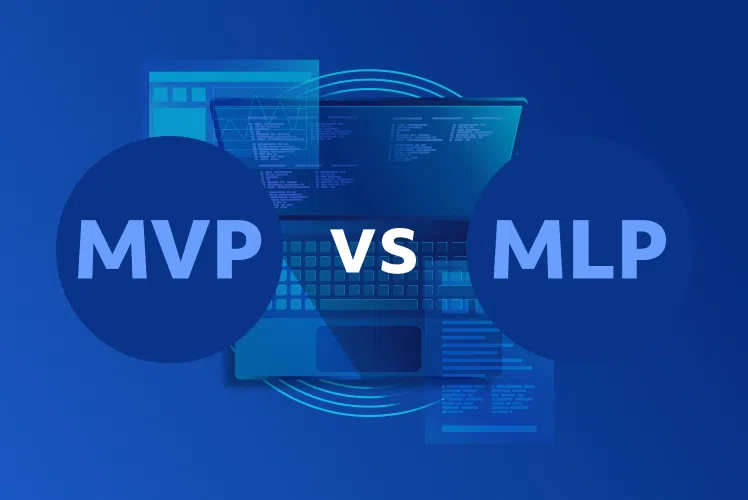Table of Contents
The concept of smart cities is nothing new, but it’s been the last several years since we started seeing its full realization. As the Internet of Things has become more of a commodity than an innovation, cities across the world have become more tech-focused. As a result, we are already seeing such examples as Dubai, Oslo, New York, or Amsterdam using IoT technology to benefit its residents.
While the smart city concept has not yet been realized to a 100%, there is already some significant progress to observe. So why does IoT in smart cities matter? Here is what we have to say.

What is a smart city?
First, let’s define what a smart city exactly is. While there is no universal definition, we can say that a smart city is an urban area that uses technology to promote sustainable development. A smart city also uses technology to collect the data and uses this data to provide a better quality of government services and improve the welfare of its residents. Let’s look at an example to make things clearer.
Say, there is a city equipped with sensors to enable smart lighting. By collecting data with sensors, operators can better understand when lights can be dimmed, when there is a need for them to be brighter (based on occupancy and weather conditions), and what hours are best to turn them on and off. In this way, the government can significantly reduce street lighting costs by adjusting the lighting to the current conditions. And that’s just one example of using technology within a smart city concept.
If you need examples of real cities that already took a step towards being IoT-smart, they are:
- Tokyo, Japan: energy-efficient building codes, real-time sensors and cameras for traffic monitoring;
- Oslo, Norway: smart energy and waste management;
- New York, USA: automated water meters, smart sensors for traffic management.
And many others, actually. And now that we are clear on what a smart city is, we need to look at its cornerstone – the Internet of Things.
IoT in smart cities: how do they work together?
Let’s quickly recap everything we know so far about the Internet of Things in order to understand the role of IoT in smart cities and why it fits the smart city concept so well.
The Internet of Things is an interconnected system of devices that communicate with each other via embedded sensors. The main idea behind this technology is to collect the data in real-time, send it to the server, and use this data to gain valuable insights. An example is a wearable device that collects your health data and sends it to an app which, in turn, is able to predict your condition and provide useful recommendations.
Now, let’s get back to the smart city IoT. The most common use cases of using IoT for smart city are:
- Sensors: lighting, humidity, temperature, motion;
- Video surveillance: monitoring of street occupancy and traffic and enhanced safety in terms of reduced street crimes.
We will look at the examples in more detail below and for now, let’s look at the reasons why smart cities should be implemented more actively and why they will become common in the nearest future.
The benefits of using IoT in smart cities
If everything seems to be functioning just fine, the question is: why do governments really need to bother with implementing an IoT system into their cities? Here are the biggest reasons:
- Contribution to environmental sustainability: by better managing energy consumption due to constant monitoring, it becomes possible to significantly reduce emissions;
- Optimized infrastructure management: the use of IoT helps better manage maintenance works, understand traffic flows in critical areas, and improve their safety via real-time monitoring.
- Better traffic management: intelligent monitoring helps improve traffic flow, street occupancy, and hence level of residential satisfaction with the traffic functioning.
- Increased public security: due to smart video surveillance, IoT allows to significantly reduce criminal activity and potential threats;
- Optimized transportation: IoT helps better plan transportation routes and improve traffic flows, thus greatly reducing congestions.
As you see, the use of IoT for smart city brings several tangible and significant results that directly impact the welfare of residents. And while it’s challenging to implement an IoT system on all levels, cities can already take minor steps towards becoming smarter.
IoT applications in smart cities
Finally, it’s time to talk about the main cornerstones that form an IoT smart city. We can define three main areas of IoT applications in smart cities: public utilities, transportation, and residential services.
Public utilities
Public utilities cover a wide range of services provided to city residents, from lighting to waste collection. But to remain within the IoT area, there are five main categories:
- Lighting: as already mentioned, the Internet of Things for smart cities allows smarter control of street lighting depending on weather conditions and street occupancy. This, in turn, leads to a reduction of lighting costs and the adoption of lighting to the real needs of citizens.
- Household energy consumption: includes water, electricity, and gas. Same as with lighting, constant monitoring allows for better energy distribution and may help decrease the bills.
- Waste collection and disposal: sensors can indicate when waste bins are full so community services can more accurately manage the vehicle load and arrive only when containers are full.
- Infrastructure monitoring and maintenance: IoT offers such options as preventative maintenance, predictive maintenance, and instant notifications for community services to timely react to any malfunctions in the water supply or heating network.
- Internet access in public areas: another important aspect of a smart city is access to the Internet in major residential areas.
Transportation
In terms of using IoT in smart cities, transportation covers both traffic and management of municipal vehicle fleets. In addition to the abovementioned fleet management and fuel consumption, here are other IoT use cases related to public transportation:
- Dynamic traffic modeling: helps prevent congestion and ensures a sufficient level of traffic load.
- Management of municipal vehicles: one of the most critical issues for a city government is the efficient management of municipal vehicle fleets. With sensors and video surveillance, it becomes much easier to come up with optimal routes, provide preventative maintenance, and manage fuel consumption.
- Management of parking spaces: contributes to better road traffic capacity.
- Connected public transport: by enhancing public transport with Internet access and tracking device, it becomes possible to decrease the waiting time for the passengers and increase the level of satisfaction among citizens.
- Automatic surveillance: helps track not only the overall traffic movement but timely detect any violations and issues, allowing community services to react immediately.
Residential services
As if the abovementioned points are not good enough, there is one more example of smart city using IoT that needs to be mentioned. Residential services encompass the overall care that the government is ready to provide to the citizens and it includes:
- Emergency services: IoT enables emergency teams to timely react to signals received from sensors and thus improve the quality of services.
- Public security: IoT can enhance public safety with face recognition and video surveillance technologies, thus reducing the number of street crimes.
SoftTeco’s contribution to smart cities development
Throughout our experience in the IT industry, we’ve come across several projects that fit within the smart city concept. Since all these projects were based on IoT technology, every time it was an exciting challenge for us and we can gladly state that we delivered the expected results and made a contribution to the smart city development.
C2 Smart Light
C2 Smart Light is a project that we worked on together with our Finnish client. The client offers smart lighting control solutions to be used in a city (i.e. city councils, stadiums) and requested SoftTeco to update the existing system and add new features to it.
The final result is an IoT municipal street light management software. The solution allows operators to remotely turn the lights on and off, control the dimming level, monitor the status of lights in terms of predictive maintenance, and make automatic adjustments of the light intensity based on the current weather conditions. In this way, C2 Smart Light helps its users better manage energy consumption and reduce costs of public illumination.
CarSleep
Another interesting project that we worked on is CarSleep, which allows users to search for parking spaces and pay for them via their mobile devices. The application has a built-in map and uses GPS to help find the nearest available parking lot. As well, the app has a built-in payment system so users don’t have to search for a meter or kiosk but they can purchase a subscription instead. In this way, CarSleep falls within the residential services category and fits well within the concept of using IoT in smart cities.


Comments